Two faces of a coin

Written by Umara Qureshi
Umara Qureshi is a passionate and values-driven Head of School with a proven track record of securing strong outcomes across a range of settings—including the successful launch of a start-up school. Deeply committed to equity, inclusion, and social justice, she believes in the transformative power of education to change lives. Umara leads with integrity, fosters cultures of high expectation and belonging, and champions staff development, pupil voice, and ambitious opportunities for all learners.
Growing up as a British ethnic minority girl in south east England in the 1990s, I was oblivious to my dual nationality, my ethnicity being a minority and that I essentially lived in two different worlds.
And it was with great ease that I transitioned from one world to the other. I was able to behave according to the expectations of the community I found myself in and it was absolutely natural to adapt etiquette and lifestyle. Being able to adjust and adapt into two contrasting cultures and societies was automatic. It was absolutely normal to have two identities. It was and is so easy to switch either on or off or fuse the two together. And I believe that is the beauty of having two faces to a coin.
During adolescence, I was lucky enough to be around peers from a similar background. My culture was accepted. As teenagers, I explored and shared cultures with my friends from different ethnic backgrounds and we celebrated our identities. It was normal for us to be different. I think that’s the beauty of growing up in Luton. As I grew up, there were more cultures I was exposed to. It was lovely just meeting them and getting to know them, and sharing our cultures and celebrating our differences.
The ease of social and cultural fluidity became a burden as the issue of identity and the social pressure increased into adulthood. And I don’t think that’s inevitable. I think it’s perceptive. Social media is the greatest platform for people to express their identity issues and exposure to such material festers insecurity. Movies like ‘Bend It Like Beckham ‘ exacerbate identity crises as they focus on the dilemmas that not belonging to one culture can create and portray it as a hindrance. It loudly suggests that holding onto traditional culture will hold girls back from fantastic careers. This is untrue and an injustice to ethnic minorities. Unknowingly you develop a perception of having the same inferiority that others express, regardless of your own experiences and successes. I only realised how I feel about these portrayals when I watched it with my daughter and saw the seeds of identity crisis being sown with adult eyes. The need to impress, be like others around and the desire to not be different becomes prevalent and feeds the identity issue.
I was lucky enough to have many role models giving me the confidence to continue celebrating my ethnicity, nationality and culture but I met lots of people from the same background as me, who weren’t proud of it and who didn’t like it. I even know people who say that they have no ethnicity and they don’t consider themselves to have any ethnicity. I can’t pretend that I didn’t feel the burden and pressure too. The pressure to be the same as others puts doubts in your mind and it makes you think that you’ve drawn the short straw because you face challenges around your identity. Feeling as though you don’t fit in with people around you and you are looking at one particular group and wondering why you couldn’t have just been like them so that you didn’t have to face these challenges. However, I believe that we’re very lucky to have two sides. The beauty of being British Asian, is that you’ve got a double identity, you’re not two halves. I think that’s looking at the glass being half empty, when in fact, the glass is doubly full.
The greatest assumption that people make is that all British people lead the same lifestyle and that’s not true. Within British communities, individuals do not all do the same things. And there is not an expectation for every British person to fit a stereotypical, specific lifestyle to be accepted or successful. I believe that this is the biggest misconception. Even if you do not do things in the same way as others around you it does not hinder you in leading a successful life.
The key points for me are that we have additional lifestyle choices, lifestyle events, skills, languages, culture, processes, emotions, personal family links and social attributes stemming from our ethnic background that enhance us as people and do not limit us.
We have our ethnic background and we also have a British background. We can pick, choose, fuse and innovate. So we’ve got more to our lives, not less. Having these two identities has doubled our life experiences, not halved it. We’re not torn between two worlds, we are spread across two worlds. Not everyone has this option. It is an existence to celebrate, not to be conflicted about. We shouldn’t be conflicted. We should recognise that we do have more to offer. We have a lot more to offer as we’re always steering the way on this newly paved pathway and balancing the vast knowledge, experience, pleasures, perks, broad mindedness, inclusivity and diversity. We need to recognise the potential that we have. Stop being a coin with two faces, embrace your potential and become three dimensional.
We have greater potential being multi-faceted. Having this rich ethnic / nationality is a combination that makes our life doubly wholesome.
The empty deserts sun scorched surface
In the moonlight is tormented by a cold menace
How blissful the union of the sun and moon could be
The immense respite and relief it could bring
The vibrance of the butterfly is unknown in the cocoon
Emergence from confinement allows the beauty to bloom
How proud, bold and brave it has to be
Its display and its presence makes the natural world sing
Reflections on an Unseen Mind: Rethinking Education Through a Neurodiverse Lens

Written by Angel Hinkley
Mathematics Teacher & facilitator of the Anti-Racism Society at Drumchapel High School.
Just finished watching Jamie Oliver’s programme on dyslexia, and I’m left with so many thoughts—questions buzzing in my mind, especially as someone who is dyslexic myself. These questions feel so fundamental — yet perplexingly remain on the periphery of our educational discourse.
Why, truly, is early diagnosis not treated as an absolute, non-negotiable priority? What kind of training will teachers actually receive—training that helps them recognise dyslexia, nurture different minds, shift their understanding, reshape their approach, and see the brilliance beneath the difference? Who writes these programmes? Who decides? And crucially—will any of the architects have walked this path themselves, peering through the same fog, navigating the same hidden gaps?
Before I started school, I felt… normal. Confident. My dad said I knew my own mind. I was curious, chatty, and bold. Part of growing, of course, is the necessary challenging of that self-assurance, a healthy friction. But what awaited me was not friction, but an unhealthy shift, a fundamental reordering of my landscape that would cast long, often difficult, shadows.
The first chill of difference settled in a primary school classroom. Something about the learning – the way letters danced, the way sounds refused to anchor themselves to symbols – felt intrinsically wrong. I’d just been given glasses, and I recall my father’s anxious voice, wondering aloud if these new lenses were the problem: “My daughter has turned thick!” Harsh words, yet spoken not in cruelty, but in the fear of a parent watching his child struggle, change, her spark dimming and not knowing why.
My dad sought answers at a specialist centre. I remember the tests vividly. Not the content, but my desperate strategy: to outsmart them. To answer not as I would, but as I imagined a ‘normal’ person would. I didn’t want to be me. And then came the diagnosis: dyslexia. I felt it. Deeply. They told my dad that the good news was I had worked so hard in the tests, I might one day be “average.”
Average.
The consolation? That the effort I’d exerted in trying to conform was ‘outstanding!’ With such effort, they predicted, I might one day become ‘average’! I knew that ‘average’ was no comfort to a father’s hopes. I felt broken and flawed. The implication was clear: my inherent way of thinking was a deficit, my ‘normal’ was unacceptable, and the highest aspiration offered was mediocrity measured against a standard I could never truly meet. What I didn’t yet understand was that I was navigating not my own failure, but the failure of a system that couldn’t see me.
But that very day, my dad turned it into joy. We did what Londoners, rushing headlong through their own lives, so rarely do: we became tourists in our own city. We paused before landmarks we’d never really seen—Parliament, the Tower, the Thames, the Changing of the Guard, St Paul’s with its whispering galleries. To this day, I still love to go there, with such fond memories in my mind—fun, love, comfort and self-assurance; forever etched my heart. It was, I think, the seed of the resilience I would come to need. Because school didn’t get easier.
The remaining primary years unfolded with a particular kind of quiet humiliation. My books contained few words—simple stories, devoid of the depth that excited my curious mind, hidden under the desk in shame. I was taken from the classroom for ‘special lessons’, but I couldn’t tell you what I learned—only how it felt to leave the classroom: different, embarrassed.
Education became a world where I was perpetually misunderstood. Learning was relentlessly dumbed down. Later choices only compounded the frustration: English Literature was replaced with Typing (a cruel irony for any dyslexic!), and Classical Studies replaced Latin — a subject I now realise could have helped me, through the understanding of word structure and roots: morphology.
Dyslexia, I have come to understand, is complex. It is, fundamentally, a different way of learning. It is also, undeniably, a disability. Even typing that word, owning it, is hard. I say it with reluctance. Mainly because of the world’s ongoing inability to understand it without seeing it as something lesser. People still judge.
But the truth is, navigating the world through a different lens brings unique strengths. And yet, within our education systems, we remain anchored to the standard measure.
It’s taken me decades to learn that some of my struggles—like not hearing certain phonetic sounds—were neurological. I’ve had my hearing tested countless times. Turns out, it wasn’t my ears—it was my brain. No one told me that. I found out from a documentary. If diagnosed early, those sounds could’ve been taught, reshaped in my brain’s formative years. That early window—so often dismissed—matters. It could have spared the burden I carry every day.
For me, this auditory gap is profoundly disabling. Because when you can’t hear a sound properly, you can’t pronounce it. And when you can’t pronounce it, you can’t spell it. The cycle repeats.
Correction becomes constant—and even well-meaning correction starts to sting. Sometimes, the correction offers a fleeting clue. Mostly, it washes over me, leaving only a residue of quiet despair. Negative thoughts creep in. Do they think I simply wasn’t paying attention? Do they think I’m stupid? Beneath the surface lies a persistent whisper: I am stupid. I know I’m not. But feelings rarely ask permission from logic. It reinforced that deeper feeling of a system not seeing me. Only my mistakes. I mask it well, most people would never guess.
Yet, amidst these shadows, glimmers of hope emerge. Remarkable work is being done—work that focuses not on forcing the dyslexic brain into a neurotypical mould, but on teaching it in the way it learns best. I’ve discovered morphology— the structure, origin, and meaning of words. Learning to break down words into roots, prefixes, and suffixes has eased the burden of spelling and pronunciation. It’s been a quiet revelation. As an adult, time is limited, and progress is slow but undeniable within the safety of my own home. But out in public, where my confidence falters, the words still come out wrong. Had this been the way I was taught in school, it would have ignited my mind and my pronunciation and spelling would have improved.
I also discovered SQR (Survey, Question, Read) —a structured strategy to navigate dense texts. First, you survey the text (titles, headings, summaries). Then you question—what do I want to learn? Finally, you read actively to find key ideas. This gives reading structure and purpose—an intellectual pathway I wish I’d known earlier.
How many classrooms teach strategies like these? How many teachers even know they exist—or are given the time to explore them? What else is out there, still undiscovered?
The concept of “mixed abilities” feels ripe for reimagining. It shouldn’t merely be about different paces on the same track, but about genuinely exploring how we learn differently, how our diverse strengths can weave together to create a richer understanding. It should expand our notion of intelligence, not constrain it.
I work with many neurodiverse young people, including those who are autistic, those with ADHD, and those whose paths diverge from my own. Each day, their unique lens on the world — their capacity for empathy, their brilliant insights — deepens my understanding — my passion for life. I listen. They teach me how to teach. They show me how wide the world truly is. Yet I, too, must navigate it—stuck within the rigid constraints of education itself. And it’s a constant balancing act. But I see the cost. I see the toll it takes on these young people—the strain on their mental health, the erosion of their resilience, the crushing weight of perfectionism; a common trait in those who feel they don’t belong but are desperately trying to. The fear of imperfection is ever-present.
I hear the echoing mantra of ‘raising attainment.’ And then I think of what Jamie Oliver’s programme reminded us: we, the neurodiverse, make up around 25% of every classroom. One in four. That’s not a problem to be fixed. That’s a revolution waiting to happen. And still… we lose too many. Bright minds stranded on the shores of a curriculum that never saw them. Children who think they are broken, simply because the mirror they’re shown is cracked and narrow. I see it and feel it in them.
And what is attainment measured by? Tests designed for neurotypical processing? By curriculum that value rote learning over deep structural understanding or creative insight?
So, I write this for them. For the children still sitting in classrooms thinking they are less. For the educators who are trying—but feel unsure, overwhelmed, or simply don’t have the time to learn and explore. For the architects of future programmes: please, build with us, not just for us.
We are not broken. We are not failed versions of a system that was never built for us. We are different minds, with different strengths, waiting not to be fixed, but to be seen.
From Silence to Story: How My Autistic Son Inspired a New Chapter in Inclusive Literacy
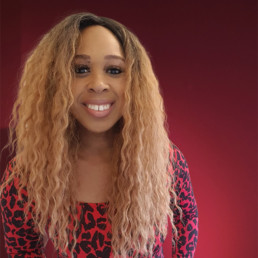
Written by Pamela Aculey
Pamela Aculey is an award-winning author, public speaker, and the founder of Just Like Me Books and MIXD Reality—the creators of the world’s first inclusive augmented reality picture book. Inspired by her autistic son Walter, Pamela is passionate about using storytelling and technology to create inclusive, interactive experiences that reflect the beautifully diverse ways children see and engage with the world. She is also a full-time carer and advocate for representation in education and beyond.
They say necessity is the mother of invention. But for me, motherhood itself sparked an invention that would not only change how my son reads, but how countless children see themselves in stories.
My journey with autism, storytelling, and technology began with my eldest son, Walter. A bright, beautiful mixed race boy who, in his early years, struggled to communicate verbally. Walter is autistic and was non-speaking until the age of 7. As a parent, nothing prepares you for the silence—especially when all you want is to hear your child say “Mummy.” But in that silence, I learned to listen differently. I began to see the world through Walter’s eyes: colourful, musical, expressive in ways that didn’t require words.
Books became a lifeline. But while reading to Walter, I noticed something glaringly absent—him. None of the characters looked like him. None moved, spoke, or communicated like him. Representation wasn’t just lacking; it was almost non-existent. I wasn’t just searching for stories; I was searching for mirrors.
And one day, in the silence, Walter showed me what connection could look like.
He had one particular book he returned to every single day. He’d scan the pages, then walk over and hand it to me—always open to the same page. He’d hum and flap the book gently in front of my face. I assumed he wanted me to read the story—again—for what felt like the tenth time that day. So, I would.
But then Walter would get upset. Irritated.
He’d snatch the book out of my hands and throw it to the floor.
And a few minutes later? He’d bring it back and start the whole process again.
I was confused. Frustrated. Heartbroken.
Until one day, I paused long enough to really look at the page he kept coming back to.
It was an image of a little boy drinking water.
Suddenly it hit me:
Walter wasn’t asking for a story.
He was trying to tell me he was thirsty.
That moment changed everything. My little boy, who didn’t use words, had found his own way to communicate. He didn’t need language—he needed connection.
That’s when the idea behind Just Like Me Books was born. I wanted to create stories that reflected children like Walter—not only in how they look, but in how they experience the world. Our debut title, Buster Finds His Beat, follows Buster, an autistic, music-loving mixed-heritage boy who communicates using beats, rhythm and music. Sound familiar? It should. Buster is inspired by Walter.
To bring the story to life in a way that resonated with children like him, I incorporated augmented reality (AR). I created an app where children can scan the pages and watch Buster dance, laugh, and play drums in 3D. For neurodivergent readers, this fusion of storytelling and sensory experience offers not only joy but accessibility.
Seeing themselves in stories is one thing. Interacting with them? That’s a whole new world.
This innovation became the foundation for MIXD Reality—a creative tech company I co-founded to explore how immersive technology can transform learning, reading, and communication. We now partner with educators, publishers, and brands to create AR-powered experiences across industries: from children’s books and emotional literacy tools to museums, healthcare, and financial literacy.
With nearly 1 in 7 people identifying as neurodivergent (NHS England), we need more than just good intentions—we need practical, inclusive resources. Traditional classroom tools often leave behind children who process the world differently. AR bridges this gap by turning passive reading into an interactive journey that supports diverse learning styles.
We are currently in the early stages of conducting our own research to explore how augmented reality can support autistic children aged 5–8. We are actively seeking partnerships with families and organisations to help us carry out this important work. If you would like to be part of this, please get in touch. Because innovation shouldn’t be reserved for the few—it should uplift the many.
I’ve watched Walter go from being non-speaking to now writing his own short stories—and talking all the time! He’s 11 now, and still beats on everything—tables, tubs, anything that makes a sound. But more importantly, he reads. Not because he has to, but because he wants to. And when he saw himself in Buster, he beamed.
That smile reminded me why I started this work in the first place.
We often talk about diversity and inclusion in terms of policy, but what about practice? Are our bookshelves inclusive? Are we designing content with all learning styles in mind? Are we creating mirrors and bridges?
My hope is that Just Like Me Books and MIXD Reality spark more questions, more conversations, and more creativity.
Because every child deserves to be the hero of their own story—and sometimes, all it takes is pausing long enough to really look at the page they’re holding.
BLAM UK BOOK: Global Black Narratives for the classroom: Vol 1 & 2
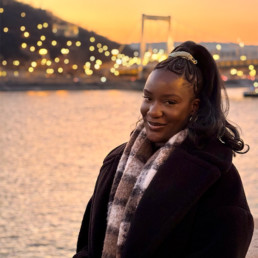
Written by Bettina Ogbomoide
Project Coordinator at BLAM UK (Black Learning Achievement and Mental Health UK). Passionate about Black studies, and dedicated to educating and exploring the cultures and histories of the African diaspora.
Too often, Black history is limited to the margins of the school calendar, and only acknowledged during Black History Month, which also normally tends to focus on specific narratives i.e. the transatlantic slave trade or the civil rights movement in America. This approach not only restricts the richness and diversity of Black experience, often excluding Black Britain altogether, but also squanders the opportunity to engage students with a fuller, more accurate version of global and British history.
At BLAM UK, we believe that Black history is not an add-on, but rather it is an integral part of understanding the world we live in. This is why we developed Global Black Narratives for the Classroom, a two-volume educational resource designed to facilitate primary school teachers to embed Black history, including British and global narratives throughout the academic year. Rooted in England’s National Curriculum, the books aim to save teacher’s time, boost their confidence and subject knowledge, and make it easy to teach global Black histories in a way that is accessible and inclusive.
Volume 1: Black Britain and Europe
The first volume focuses on the histories of Black communities in Britain and across Europe. It offers creative lesson plans for themes ranging from early Black presence in Tudor England to 20th-century activism and cultural movements. By highlighting figures such as Claudia Jones, Olive Morris, and Josephine Baker, the book challenges educators to expand their understanding of British and European history beyond narrow Eurocentric, male-domoinated, traditional narratives.
Volume 2: Africa, the Americas, and the Caribbean
The second volume provides a broader global context. It provides a deep dive into African histories before colonialism, the cultural traditions of the Caribbean, and the layered experiences of Afro-descendant communities across the Americas. Through guided activities and thought-provoking content, students are encouraged to explore the global interconnectedness of Black narratives and resistance.
Both volumes are filled with practical tools which include lesson plans, engaging worksheets and creative activities, making it easier for teachers to deliver high-quality lessons with confidence and cultural sensitivity.
At its core, Global Black Narratives for the Classroom equips educators with the toolkit they need to centre Black perspectives in the curriculum, not just occasionally or tokenistically, but consistently and meaningfully. By doing so, we not only enhance the learning experience for all students, but we also create a more inclusive and culturally relevant and responsive educational environment.
Teachers who are seeking to counter the narrow, divisive rhetoric we are seeing increase, or are committed to anti-racist pedagogy will find in these books an invitation for reflection and the opportunity to increase your subject knowledge. All whilst encouraging critical thinking, and opening up space for alternative perspectives and more diverse stories to be told in the classroom.
You can purchase Global Black Narratives Volumes 1 & 2 from independent, Black-owned bookstores Book Love and Afrori Books, as well as Amazon, and Routledge.
Please see the links below to purchase:
Book Love (Black-owned anti-racist bookseller)
Vol 1: Global Black Narratives for the Classroom Africa, the Americas and the Caribbean
Vol 2: Global Black Narratives for the Classroom: Britain and Europe
Afrori Books (Black-owned independent book shop)
Brighthelm Church & Community Centre, Brighton and Hove, Brighton BN1 1YD
Vol 1: Global Black Narratives for the Classroom: Black Britain and Europe –
Vol 2: Global Black Narratives for the Classroom: Africa, the Americas and the Caribbean
Routledge
Vol 1: Global Black Narratives for the Classroom: Black Britain and Europe
Vol 2: Global Black Narratives for the Classroom: Africa, the Americas and the Caribbean
Amazon
Vol 1: Global Black Narratives for the Classroom: Black Britain and Europe
Vol 2: Global Black Narratives for the Classroom: Africa, the Americas and the Caribbean
Order our book and spread the word!
BLAM UK is here to transform the way we think about Black narratives, one classroom at a time!
Designing Neurodivergent-Friendly Classrooms: Rethinking Inclusion from the Inside Out

Written by Sana Siddiq
Sana Siddiq is an educator, coach, and creator of The Elevate Framework™, guiding schools to lead with empathy, equity, and emotional safety. Her work centres neurodivergent inclusion, systemic transformation, and holistic development—supporting educators to unlearn outdated systems and build compassionate, conscious spaces where every learner can thrive.
As the educational landscape evolves, the call for inclusive classrooms has grown louder. But inclusion, when viewed through a neurotypical lens, often amounts to little more than accommodation. True inclusion must be co-designed with, not just for, neurodivergent learners—and that demands a radical reimagining of the systems, assumptions, and environments we teach within.
A Paradigm Shift: From “Fixing the Child” to Rethinking the System
Traditional classroom models are built on industrial-era expectations of standardisation, control, and passive compliance. These models were never designed for neurodivergent minds—and expecting children with ADHD, autism, sensory sensitivities, or anxiety to thrive in such spaces without reconfiguration is not just misguided, it’s unjust.
Instead of asking: How can we make this child fit the classroom? we must ask: How can we make the classroom fit the child?
This isn’t just semantics—it’s a shift in power, responsibility, and educational ethos. Inclusion is not the work of putting ramps in place for those who can’t walk the stairs. It’s the work of redesigning the building altogether.
What Does a Neurodivergent-Friendly Classroom Actually Look Like?
- Sensory-Conscious Spaces
Sensory overwhelm is one of the most commonly misunderstood barriers to learning. Yet classrooms are often visually cluttered, fluorescent-lit, noisy environments. We must move beyond tokenistic “calm corners” and instead build entire spaces that are:
- Predictable in layout
- Low-arousal in aesthetic (muted tones, warm lighting)
- Flexible in sensory offerings (noise-cancelling headphones, wiggle stools, movement options)
Rather than viewing sensory needs as “special,” we can normalise and embed these supports universally, benefiting all learners.
- Regulation as a Collective Culture
Many schools still use behaviourist models—token charts, clip systems, sanctions—that confuse dysregulation with defiance. But neuroscience tells us that the developing brain cannot access executive functioning when in fight, flight, or freeze. What a dysregulated child needs is not a consequence—it’s co-regulation.
Neurodivergent-friendly classrooms:
- Teach and model regulation proactively
- Offer regular body breaks, movement prompts, and access to regulation tools
- Embed emotional check-ins as a non-negotiable part of the day
- Universal Design for Learning (UDL)
UDL isn’t about creating “special resources.” It’s a mindset that recognises there is no one-size-fits-all learner.
This means:
- Offering multiple means of engagement (movement-based, visual, auditory)
- Supporting alternative ways of showing knowledge (video, drawing, mind maps, voice recordings)
- Designing flexible tasks from the outset, rather than retrofitting support
- Agency and Autonomy as Core Pedagogy
Many neurodivergent children feel disempowered by school systems that reward obedience over authenticity. Reclaiming agency is not just empowering—it’s protective.
You might:
- Involve students in co-creating classroom agreements
- Offer opt-in group work, or self-paced learning tasks
- Provide choices in how, where, and when work is completed
Thought Leadership: We Need a Cultural Shift, Not a Checklist
This work is not about box-ticking or surface-level strategies. It is about dismantling ableist structures baked into our educational systems.
We must move away from the deficit narrative that views neurodivergence as a problem to be solved. Instead, we need to centre neurodivergent voices, lived experience, and expertise in how classrooms are shaped. Ask yourself:
- Who are our systems currently built for?
- Whose needs are framed as “challenging”?
- Who has to work harder just to belong?
The answers to these questions reveal more about our values than any mission statement.
Leadership Implications: Inclusion Is a Leadership Practice
School leaders must lead this shift with courage. Neurodivergent-friendly practice must be embedded into:
- Curriculum design
- CPD and teacher training
- Safeguarding and wellbeing policies
- Recruitment, voice, and governance
Inclusion cannot rest on the shoulders of one passionate SENDCo or learning support assistant. It must be championed, funded, and normalised from the top down.
In Summary
Designing neurodivergent-friendly classrooms is not about making tweaks to traditional practice. It’s about interrogating the very foundations of what we call “normal” in education. It’s about rejecting the idea that some learners are “too much,” and instead building a world that is wide enough to hold all ways of being.
Because the truth is, what works for neurodivergent children works better for all children: more agency, more flexibility, more emotional safety, more belonging.
And that’s not just inclusion—that’s transformation.
Why Black History Is More Than Just a Month: Embedding Legacy, Learning and Leadership All Year Round
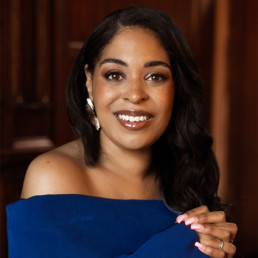
Written by Ellisha Soanes
Ellisha is a multi award-winning Equality, Diversity, and Inclusion Specialist. Ellisha worked as Director of Equality Diversity Inclusion for several colleges and adult education in East Anglia, and as a lecturer teaching EDI has worked in the education sector for the over 10 years, and in the health and social care/ Public Health sector for over 20 years. Ellisha works as an international consultant and collaborates with businesses and community projects to empower others and create new opportunities through leadership. Ellisha has worked closely with the Department of Education, and continues to do so on creating changes, sitting at parliamentary boards. She has been featured in global news journals as column writer and papers.
As we mark five years since the murder of George Floyd, the question many of us in education and leadership circles are still grappling with is this: how do we move from reactive to proactive when it comes to race, equity, and inclusion? How do we ensure that Black history is not confined to a single month in October, but becomes a golden thread woven through every aspect of our curriculum, policies, and culture?
The answer lies not in performative gestures, but in intentional action.
Black history is British history, world history, and human history. It doesn’t start or end with the transatlantic slave trade or the U.S. civil rights movement — though those are key chapters. But if that’s all we teach, what message does that send to our Black students and to other students and colleagues? That our legacy begins with oppression?
We must ask better questions and dig deeper. Were we not inventors, pioneers, warriors, scholars? Black Tudors existed. Black soldiers fought in both World Wars. Ancient Kemet — known today as Egypt — led the world in medicine, astronomy, and education. Our contributions span centuries and continents.
So how can educators ensure that Black history is embedded all year round, not just dusted off for October? Here are three practical steps based on my experience:
- Invest in Training and Development – Begin With Yourself
One of the most common questions I ask educators is: Were you taught Black history in school? For most, the answer is no — or if yes, only slavery and civil rights.
This is not just a gap in knowledge. It’s a gap in identity, empathy, and understanding.
You can’t teach what you don’t know. That’s why anti-racism training is vital. But it’s not enough to attend a workshop and tick a box. True transformation starts with self-reflection. What are your biases? What stories are missing from your own education?
Before you try to lead young people, work with your own teams first. Create spaces where educators can learn, unlearn, and build confidence in delivering diverse content. Challenge the assumption that Black history is “extra” – it’s essential.
- Appoint EDI Ambassadors at Every Level
Embedding diversity is not the responsibility of the one Black staff member, the LGBTQ+ colleague, or someone with a disability. It must be everyone’s job.
That’s why I always recommend appointing Equality, Diversity, and Inclusion (EDI) ambassadors across all levels — from your governing board (yes, even your governors should include an EDI champion) to your reception team.
These ambassadors shouldn’t just represent communities — they should lead change. Help shape policy, organise events, challenge bias, and ensure that inclusive practice is not a side project but a core priority.
By having representation across your organisation, you ensure accountability — and create role models who are visible, vocal, and valued.
- Adopt Student-Led Approaches: Celebrate ‘Heroes on Your Doorstep’
Young people don’t just want to be taught — they want to co-create.
Some of our most impactful work has come from listening to what students want to see in their curriculum. For example, in our public services courses, students highlighted local Black heroes — people whose stories are often forgotten, but who made a lasting impact.
One such figure is Derrick Bobbington Thomas, one of the first Black servicemen from the Windrush generation in Suffolk. His story, shared by students, was a powerful reminder of the richness of local history.
Another initiative included working with Wooden Roots, an African drumming group deeply rooted in African history and culture. Not only did they bring energy and rhythm to our college campuses, but they also played a role in the Black Panther movie — showcasing how African heritage resonates on global stages. https://www.voice-online.co.uk/news/uk-news/2024/06/05/black-panther-african-drumming-company-to-offer-bursaries-for-underrepresented-groups/
Partnering with local charities, community groups, and Windrush societies is a brilliant way to fill in the historical gaps. They offer stories, speakers, and resources that textbooks don’t. And they help students see that Black history is not something far away — it’s here, in our towns, schools, and families, as author and collobarting with young people and communities I’m proud to say linking with your community, helped create black history interactive workbook used across schools in the east of the region and beyond. Elimu little book of knowledge- find your free copy here: https://www.aspireblacksuffolk.org.uk/_files/ugd/63af3a_5af8d55d89244cde90d0a8387a0aaa82.pdf
Nelson Mandela once said, “Education is the most powerful weapon you can use to change the world.” That change doesn’t happen overnight — but it begins with honest conversations, committed people, and consistent actions.
Black history isn’t just for October. It’s for every subject, every classroom, and every child.
When we expand the narrative, we empower minds. When we recognise the full spectrum of Black excellence, and when we embed this knowledge into the very fabric of our schools and organisations, we don’t just tick boxes — we transform lives.
So let’s not wait for a headline or a month. Let’s lead with purpose, educate with passion, and celebrate Black history — every day of the year.
Check out these articles to help you find your own heroes on your doorstep..
How do you plan good lessons on homosexuality when resources only tell half the story? A call for proper representation in religious education textbooks

Written by Jonny Tridgell
Jonny began his career as a secondary school teacher in 2009 and has since been a head of sixth form, head of department and lead practitioner for EDI. He has also worked in teacher education as a mentor, curriculum tutor and general tutor on the University of Oxford PGCE. He completed his MSc in Education (Digital and Social Change) at Oxford in 2024. He is currently working as Equality, Diversity & Inclusion Data and Insights Officer at Jesus College, Oxford, alongside roles as a teacher, teacher educator and researcher.
Imagine you are planning a GCSE lesson on Christian beliefs about homosexuality, but you don’t feel confident about the topic. You might have a theology degree and a PGCE in religious education, but have never really studied queer theology, or maybe you are one of the many non-specialists delivering these lessons in the UK (Orchard, 2024). You’re not sure where to begin planning your lesson. Do you do a debate with the students? Perhaps you could do some textual study, but then which texts? You know that Christianity has often the basis for homophobia, but you also don’t want to suggest to your students that Christianity is prejudiced or bad. So, what do you do next?
You might look for shared resources made by a colleague or look online. You might use AI. One solution would be to use a textbook or revision guide endorsed by your exam board. Jackson et al (2010) found that many teachers used textbooks just for that and in my experience as an educator and researcher, many teachers (including me), still do. Textbooks are helpful for pitching, but also, geared as many are to exams, provide a great deal of reassurance. However, there is a risk to this, because RE textbooks in the UK tend to sanitise and essentialise Christian beliefs about homosexuality and to present these through a Eurocentric lens.
In a recent paper for The British Journal of RE (Tridgell, 2025), I found that textbooks represent Christian approaches to homosexuality in a way that has been sanitised, excising those churches that promote explicitly anti-LGBTQ+ views. These textbooks also generally excluded African Christianities and churches, portraying African Christians as recipients of aid or evangelism only, not as theologians. One reason for this might be a desire to promote community cohesion by only presenting socially acceptable or “positive” views of Christianity as real Christianity (see arguments made by Smith et al, 2018), even if this presents a view of Christianity that is false. The Eurocentric approach here is perhaps even more troubling, given the way this might exclude those whose experience of Christianity is not reflected in these textbooks.
As a gay RE teacher who studied Christian approaches to homosexuality, I can plan these lessons carefully and accurately, and I feel confident about balancing the need for academic integrity with keeping students (and myself) safe in the classroom. My years teaching about Christian attitudes to homosexuality have taught me hard lessons about framing; in my view, it is always best to treat this as a theology lesson, rather than an ethics one – that is, thoughtfully examining different Christian views across the breadth of the religion but never debating whether it is okay to be LGBTQ+ or if homophobia and transphobia are allowed. Importantly, I am not trying to criticise those who lack this confidence or this experience – I understand why someone might reach for a textbook to help plan this lesson – but I am critical of publishers who put out resources that fail to properly help with this planning. RE/RS teachers – especially those who have other specialisms – need proper support and guidance about what to teach and how to teach it. In short, RS/RE textbooks should:
- Include the full range of Christian views of homosexuality, including those that advocate for conversion therapy or other forms of anti-LGBTQ+ violence
- Include Christianities (both anti-LGBTQ+ churches and those that are affirming, along with those in between) from across the world, including Africa across all areas of Christian life.
- Recognise the inherent “messiness” of religion, and that belonging to a denomination does not mean someone’s personal beliefs necessarily fully align with its official teachings
- Frame lessons on LGBTQ+ people through theology rather than ethics; it is not safe to debate the existence of LGBTQ+ people nor is it reasonable to ask whether Christianity as a whole is homophobic; better to evaluate how a text is being used, for example, or ask why churches might have different views.
If you are the teacher I described, I would advocate caution and some reflection on whether the resource you are using really reflects the full story. If you are a textbook publisher or academic resource-maker, I hope this serves to call you in; community cohesion requires us to do epistemic justice (Fricker, 2003) to all those in our community – it is not served by pretending the world is not as it is. After all, how can we champion LGBTQ+ liberation and decolonisation if we only tell half the story?
Jonny’s article “Sanitised, essentialised and Eurocentric: an analysis of the (mis)representation of Christian beliefs about homosexuality and African Christianity in English RE textbooks” has been published Open Access here.
Nurturing Student Growth
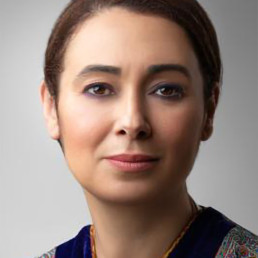
Written by Rachida Dahman
Rachida Dahman is an international educator, a language and literature teacher, and an educational innovator. She started her career in Germany as a teacher trainer advocating the importance of relationships above academics. She then moved to Luxembourg where she teaches German language and literature classes to middle and high school students. She is an award-winning poet, co-author of the best-selling book, ATLAS DER ENTSCHEIDER Entscheiden wie die Profis- Dynamik, Komplexität und Stress meistern.
As educators, we often encounter students who challenge the structures and expectations imposed upon them. These students, who may not fit neatly into standardized molds, compel us to reconsider how we approach learning and behavior. Much like many of our students, there are times when we, too, long to respond with greater patience, understanding, and freedom from ingrained patterns. The complexities, emotions, and individuality of each student are not hindrances but crucial elements of a deeper, more meaningful educational experience. It is essential for us, as educators, to defend and embrace these qualities, even in a world increasingly driven by simplification and conformity.
The Role of Schools
Our schools find themselves in a profound dilemma, and this is reflected daily in their operations. What they have lost in recent years is not only method but also mindset: the opportunity for true engagement, for respectful dialogue between teacher and learner, has in many places been replaced by a culture of acceleration. With the introduction of tablets, the human counterpart—the teacher—has been increasingly replaced by interfaces, overstimulation, and self-directed project work. Teachers recede into the background. Not because they are less important, but because the space for relational presence has eroded. And yet this is precisely what children need: a true counterpart. A voice that explains, resists, supports—and yes, sometimes confounds. A presence against which they can push and, in doing so, grow. Whether in the classroom or at home. Learning is not mere data processing. It is a dialogical process, one that requires friction, attention, and relationship. And yet, feelings continue to be perceived as disruptions rather than as language.
A Case in Point: Misophonia
Imagine this: a student, age 9, repeatedly leaves the classroom. The teacher, exasperated, records “disruptive behavior” in the class register. Classmates shake their heads. This student often weeps, quietly, in secret. The cause? The sound of chalk scraping the blackboard causes them physical pain. So does the click of pens. Months later, they are diagnosed with misophonia, a neurological condition in which the brain processes certain everyday noises as stressors, akin to danger signals. This is not a matter of upbringing, but biology. This student stands for countless children whose nervous systems function differently. Many are highly sensitive, open to stimuli, easily overwhelmed. The resulting tension often manifests physically or emotionally, not as defiance, but as a cry for help. Here lies the crux: what we so often interpret as problematic behavior is, in truth, a sign of overwhelm, not rebellion.
In our classrooms sit thousands of children like this student, for whom chalk squeaks are torment. And rather than support, they are given labels: troublemaker, dreamer, problematic child. Yet these children are not deviations, they are indicators of where the system fails.
I recall a moment that encapsulates this dilemma. During a school conference, a senior staff member said to me, “Emotions have no place here (in school).” That sentence not only reveals a deep-rooted fear of the living, but also the difficulty of defending humanity in institutional spaces. Such notions are not merely outdated; they actively obstruct progress. Not just the development of our children, but of the entire system. Because emotions are not obstacles to learning, they are the very foundation of any authentic educational relationship. Without them, we are left with administration, not education.
Supporting Sensory-Sensitive Students
- Shift from labeling to listening: If a student repeatedly leaves the room, the behavior is often marked as “disruptive.” Ask instead, What is this child experiencing internally?
- Identify triggers: Sounds like clicking pens or scraping chairs may be physically painful for misophonic students. Notice patterns and name them with the student, not over them.
- Create safety zones: Offer quiet corners or “calm stations,”not as punishment, but as places for self-regulation and agency.
- Use validating language: Say things like, “I can see this is hard for you. Let’s find a way together.” This reframes the classroom as a space of relationship, not control.
- Collaborate with caregivers and professionals: Sensory processing differences are not discipline problems. While diagnosis may help, daily support begins with you.
When these realities are ignored, schools become sites of deprivation and of subtle violence. But when they are recognized, classrooms become spaces of repair.
Classrooms as Emotional Architectures
School can serve, not only as a site of academic instruction, but as an emotional architecture, a structured space where feelings are not only expressed but entangled, displaced, and ultimately transformed through relational dynamics. Some examples are:
- Parent–teacher storytelling sessions where experiences of conflict or success are jointly narrated and reflected upon.
- Classroom-based emotional literacy routines that help children identify and navigate inner states through language, metaphor, or ritual.
- Collaborative care circles (a variation of restorative practices) that involve students, teachers, and caregivers in discussing emotional challenges without the pressure of “resolution,” but with a focus on recognition and resonance.
- These are low-threshold practices that offer space for reflection and allow children to develop a sense of emotional efficacy and belonging.
The Inner Work of Resistance
In our times, it is of paramount importance to teach children something that often goes unspoken, that the most dangerous path is the one of blind conformity—of falling for vast oversimplifications, whether of a person, a problem, or a system. Children sense when truth is being reduced to something convenient. They feel it deeply, what I would call emotional negative labor which is the quiet, consuming work of learning how to navigate, fit into, or subtly subvert the unspoken rules of a family system or institutional structure. They may not articulate it, but they intuit it—these inner negotiations, the silent effort to belong without betraying the self. Unlike emotional intelligence, which thrives in open, resonant settings, negative emotional labor arises in constricted systems where feelings must be concealed, redirected, or distorted to ensure belonging or avoid conflict. It is not defiance, it is adaptation under pressure. Examples from school contexts include:
- A student smiles and nods, but never speaks in class, afraid their real questions might be “too much.”
- A child forces themselves to endure loud group work although their nervous system feels overwhelmed, then withdraws for hours afterward.
- A teen, praised for being “easygoing,” has learned to suppress discomfort because previous complaints were labeled dramatic or disrespectful.
- A sensitive learner, after weeks of masking sensory distress (e.g., from noise, lights, or proximity), begins showing “unexplained” somatic symptoms like headaches or nausea.
- A student consistently performs well academically, yet feels depleted and detached, school is a stage, not a relationship.
Naming this invisible labor is the first step toward rehumanizing education. To support them, we must cultivate not obedience but discernment. We must help them understand that systems can be questioned, and that complexity is not a threat, but a form of truth.
What Children Truly Need
If we want students to engage with the world compassionately and consciously, we must create spaces where their inner lives are welcomed not in the distant future, but now. Students do not need rigid templates; they need genuine encounters. They need safety and understanding, especially within the school environment, which must be the protective space we offer in a world that is increasingly loud, fast, and uncertain. When that space feels unstable or unwelcoming, it is not the job of schools to control, but to understand. We must become places where inner life matters. Educators, as the key figures in the daily experience of students, play a central role in this transformation. Education does not begin with a set curriculum; it begins with how we listen, how we perceive students’ worlds, and how we respond to their behaviors. We must be attuned to their complexities and defend the space they need to grow authentically. What is needed is not further fine tuning of performance-based curricula, but a broader distribution of reasonable and vital behaviors that focus on equipping students with practical, adaptable behaviors that serve them in a rapidly changing world.
Inclusive leadership - a thought for caregivers
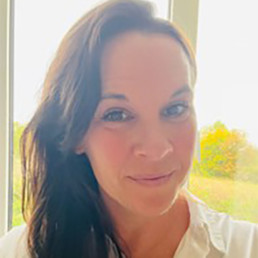
Written by Clare Haly
With a passion for truly inclusive teaching and learning, Clare has a background in education spanning 20 years. During this time, she has led at a senior level in both secondary and primary settings, improving whole school teaching and learning, cross-curricular literacy and staff development, and most recently Inclusion and SEND.
‘It is just so lonely. The playground, work, the other parents, the judgement and assumptions…It’s exhausting, and yes lonely…’
I am not the first person to comment on the complexities of flexible working. Thankfully voices are being raised that are far louder than mine, and there are some welcome shifts where understanding is beginning to seep in, that perhaps the ‘privilege’ of flexible working may actually be more of a necessity.
I get the challenge for leaders in education, I have lived it. We are teachers, we love our jobs, our vocation, our classes, our children. As if the Leadership do not have enough to think about. Children need excellent teachers in front of them, they require, and deserve consistency. But, and there is a but, it is well documented that teachers are leaving in droves, and this is not just because of the intense pressures of the job itself, but because caregiving responsibilities also really matter.
‘Family comes first’
There is no silver bullet or magic formula to help those people who find themselves in complex situations managing multiple caregiving roles. And this is not about the stereotype of the ‘working mum trying to have it all’. In the case referenced above, the man I speak of is grieving his wife who died suddenly. He has two sons, one aged 4 and the other just 6 months. This father also has an ageing parent, who is also bereaved and living with Parkinson’s disease. The logistical struggle is obvious. The emotional one is enormous. This man is also excellent at his job. One he cannot do well because of inflexibility at work. Imagine if his place of work was one of welcome and joy and a place where he could thrive within the time he could give knowing that that was enough. Instead he is rushed, stressed, apologetic, clock watching, anxious. Is this the premise for excellent output at work? What would the impact be of such a person in front of a class?
Part time does not mean part competent. Working flexibly does not mean working below par. Flexible working can be done well in schools. But it is yet to be the norm. It takes commitment, forward planning, clever recruitment, budgeting, compassion and a willingness to learn. It demands brave leadership with a trust in one’s staff and in oneself. But when successful, the outcomes are overwhelmingly positive. When teachers feel invested in, trusted, valued, they thrive. And the impact of a thriving, calm, indeed happy teacher on their pupils is not to be underestimated. You don’t need me to tell you that.
What I am questioning is how many of us truly practise this duty of care to well-being outside of the appraisal system and think holistically about the people that make our schools what they are, and the circumstances they live with outside of school. The amount of time I hear the well meaning phrases ‘family first’, ‘you must look after yourself’ – but in reality, as a caregiver, how is this meant to become your truth?
‘Middle years’
In Caroline Criado-Perez’ Invisible Women she points out that women in particular, are penalised socially and financially because of the assumed caregiving roles they carry. In our ‘middle years’ particularly, many of us as women, find ourselves not only grappling with the joys and complexities of raising children, but also tending to changing circumstances of family members, for those who become unwell, or the challenges that older age in particular can bring. So this is not about the balance of having children and having a career. This is about having a sense of empathy for the challenges staff face that pull them away from the classroom because they physically cannot be at the helm, rigidly, all the time. We are losing excellent, creative, inspirational practitioners because of a lack of flexibility.
The impact of stress on our educational colleagues and peers is well documented. The job is challenging enough without the guilt, pressure and constant stream of apology or sense of atonement that manifests itself while trying to juggle multiple adult responsibilities. I applaud those companies, institutions and yes, schools moving to acknowledge that life is not linear and that hours cannot always be rigid. But in education there is still some way to go.
Care packages and school clubs of course are invaluable and teachers that are also parents and/or caregivers are of course grateful for the support these services offer. But flexible working responds to more than logistics. Flexible working allows for improved wellbeing, not just time management: togetherness within whatever relationship has the need – in all phases of the caregiver spectrum, time for a neurodivergent child, an elderly parent, an unwell spouse; reflection, respite.
Being a caregiver should not be an alternative to a career in education, and too often teachers have to choose. I believe though that we have enough good educational leaders who have the creativity and courage to find a way to allow, indeed welcome, brilliant teachers back into school flexibly. Again: Part time does not mean part competent, flexible does not mean below par.
If we are to reach our ambition for a truly diverse edu-community then we must always be human first in our approach to how our schools are run. A truly inclusive school will empower their staff through flexible working where it is needed. As ever, it is all too easy to assume we know someone’s story. We must continue to look beyond appearances, there is always more than meets the eye.
My Experience as a Speaker at the Diverse Educators Conference in Scotland: A Step Towards Change
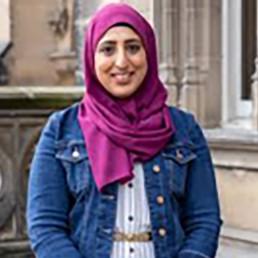
Written by Sadia Hussain-Şavuk
Sadia Hussain-Şavuk, originally a Biology teacher, is now a Diversity, Equality and Inclusion Lead working predominantly with schools within the independent sector providing teacher training, pupil workshops and consultancy in her main area of anti-racism. In addition to this she sits on a number of boards including the BSA/IELA Inclusion Advisory Board and is co-chair of the Curriculum Reforms workstream of the Anti-Racism in Education Programme.
In February, I had the incredible honour of speaking at the inaugural Diverse Educators Conference in Scotland. As the first event of its kind, the conference was a bold and inspiring step towards promoting inclusivity, representation, and meaningful change within education. The atmosphere was charged with energy, optimism, and a deep-seated belief in the power of education to shape a better future for all.
The Power of Positivity
One of the most striking things about the conference was the positivity and passion that the participants brought to the table. Educators from across Scotland, with diverse backgrounds and experiences, gathered together not only to share their ideas but to spark action. There was a sense of unity and purpose that made the event feel more like a movement than a typical conference. As I stood before such an engaged audience, it was incredibly reassuring to see how committed these educators were to making positive changes in their schools, classrooms, and communities. Whether it was promoting inclusivity in the curriculum, advocating for equitable opportunities, or fostering a more diverse learning environment, it was clear that the educators in the room were not just talking about change – they were living it. It’s moments like these that remind me why I became an educator in the first place: to make a difference. And seeing so many others who share that same drive was truly inspiring.
The Challenges We Still Face
Despite the immense positivity, there was an undercurrent of concern that stayed with me throughout the conference. While we celebrated the progress that has been made and the steps that are being taken to make education more inclusive, we cannot ignore the slow pace of change. It is difficult to not feel a sense of frustration when you consider how far we still have to go. Although there are pockets of progress, systemic barriers persist. In many schools, diverse perspectives are still sidelined or tokenised. Too often, young people with marginalised identities still face barriers to success, whether that be in terms of representation, access to resources, or the recognition of their unique challenges. As educators, we know that it’s not enough to simply raise awareness. The real work lies in creating long-term, sustainable change. But when progress is slow, it feels as though we are failing the very students we are meant to serve. The young people of today – those who will shape our tomorrow – are waiting for us to do better. And while I am hopeful for the future, it’s hard to ignore the gap between where we are now and where we need to be.
A Call to Action
The Diverse Educators Conference served as both a celebration of what’s been achieved and a reminder of the work that remains to be done. I left the event with a renewed sense of purpose, but also a deeper understanding of the urgent need for change. As educators, we must keep pushing the boundaries of what is possible. We must continue to challenge the status quo and demand that every child, regardless of their background, has access to a truly equitable education. We cannot afford to wait for change to happen on its own – we must be the ones to make it happen. The diversity, passion, and commitment I witnessed at the conference filled me with hope, but I also know that it will take all of us – working together, side by side – to ensure that the next generation of students can thrive in an educational system that fully supports their needs and potential. In the end, the Diverse Educators Conference wasn’t just a moment of celebration – it was a call to action. It was a reminder that our work is far from over, and that every step we take towards inclusivity and equity is a step closer to a brighter future for all. Let’s not rest until that future becomes a reality.

